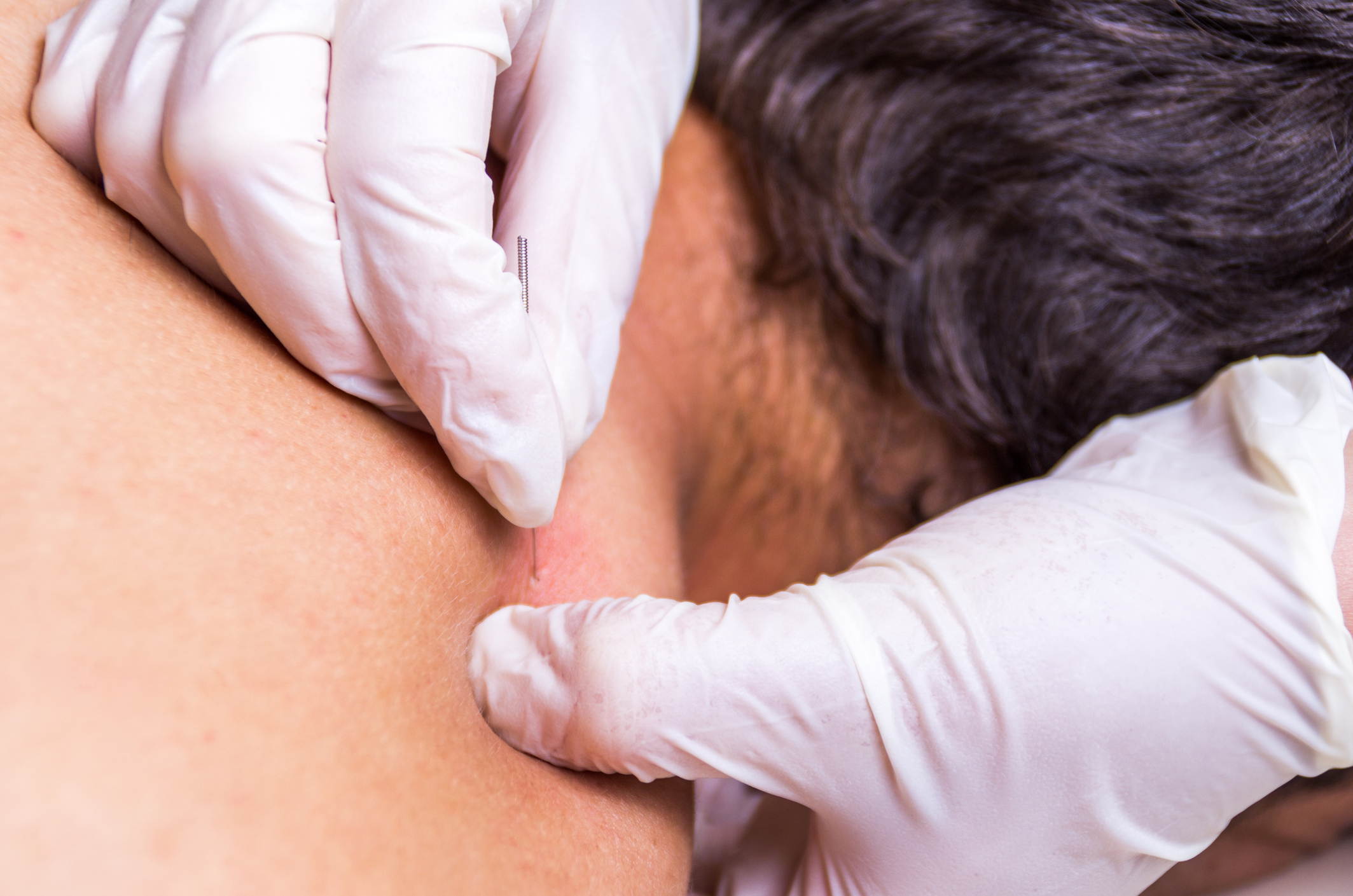Immediate pain relief so you can enjoy life again
Dry needling offers an alternative treatment option for pain relief and improved muscle movement. The treatment uses a dry needle — a needle without medicine — to target muscular and connective tissues.
With dry needling, a trained physical therapist places a fine, flexible, and sterile needle into specific locations of your tissue to decrease pain and stiffness and improve mobility and performance. It is typically combined with other physical therapy exercises and techniques.
Dry needling is not acupuncture.

What to expect
During your dry needling procedure, a physical therapist will insert the needle through the skin to target your pain points. The needle length will depend on the area of your body that is being dry-needled. Most patients feel little or no pain as the needle is inserted. The needles are typically used once per muscle and discarded.

The entire procedure takes as little as 15 minutes, and there is a low risk of infection. After the procedure, patients typically experience pain relief and improved movement lasting from a few hours to several weeks. This positive impact is amplified when combined with a carefully selected exercise program.
While the side effects from dry needling are usually minor, patients can experience:
- Bruising at the dry needling site
- Fatigue or lack of energy
- Soreness
Once the procedure is complete, your physical therapist will work to create an individualized plan that utilizes the benefits of dry needling along with other therapies.
What you should know about dry needling
Dry needling is used alongside other therapies to treat many conditions, including:
- Carpal tunnel syndrome, a condition of the hand and fingers caused by a pinched nerve
- Face and jaw pain
Fibromyalgia, muscle pain that includes fatigue, sleep, memory, and mood issues - Foot and ankle sprain, including plantar fasciitis, inflammation of the tissue that connects the heel bone to the toes
- Headache
- Hip and leg pain, including muscle strain, calf-tightness or sciatica - a condition in which a pinched spinal nerve in the lower back causes pain in the back, hip or outer side of the leg
- Impingement, a condition in which a tendon is irritated (pinched) between structures, such as a disc
Low back pain and neck pain, including radiculopathy (a pinched nerve) - Shoulder and arm pain
- Tendonitis, a condition in which the tissue connecting muscle to bone becomes inflamed
Dry needling can be used with most teens and adults with musculoskeletal issues - conditions affecting the muscles, ligaments, and tendons. However, some patients should not have dry needling, including:
- Patients with certain bleeding disorders
- Pregnant women, especially during the first trimester
Our physical therapists will work with your doctor to make sure dry needling is right for your treatment plan. Dry needling is not a service provided in every state. To see if a location near you provides dry needling, click here.
